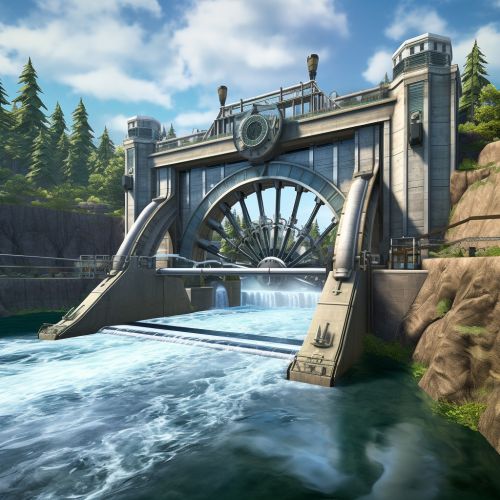Floodgate
Introduction
A floodgate, also known as a sluice gate, is a specialized type of valve used for controlling water flow. These devices are typically found in dams, reservoirs, and canal locks, and are crucial for managing water levels and preventing flooding. The design and operation of floodgates have evolved significantly over the centuries, from simple wooden structures to complex mechanical systems. This article delves into the intricate details of floodgate design, operation, and applications.
History
The concept of floodgates dates back to ancient civilizations. The earliest known floodgates were used in Mesopotamia and Egypt, where they were integral parts of elaborate irrigation systems. These early floodgates were simple wooden structures that could be manually opened or closed to control the flow of water.


Design and Construction
Floodgates are designed to withstand substantial water pressure. They are typically made of durable materials such as steel or reinforced concrete. The size and shape of a floodgate depend on its intended application and the amount of water it needs to control.
Components
A floodgate system consists of several key components. The gate itself is the most visible part of the system. It can be a single piece or composed of multiple panels. The gate is attached to a frame, which provides structural support. The lifting mechanism, which can be manual or powered, raises and lowers the gate. Some floodgates also have a lock system to secure the gate in place when it's not in use.
Types of Floodgates
There are several types of floodgates, each designed for specific applications. Some common types include:
- Radial gates: Also known as tainter gates, these are curved gates that pivot from one side. They are commonly used in dams and canals.
- Sluice gates: These are vertical gates that slide up and down. They are often used in water treatment plants and irrigation systems.
- Flap gates: These gates open in one direction, allowing water to flow out but not in. They are typically used in drainage systems.
Operation
The operation of a floodgate involves raising or lowering the gate to control the flow of water. This can be done manually, but in modern systems, it is typically automated. Sensors monitor water levels and send signals to a control center, which activates the lifting mechanism as needed.
Applications
Floodgates have a wide range of applications. They are used in dams to control the flow of water for electricity generation and irrigation. In canal locks, they manage water levels to allow ships to pass through. Floodgates are also used in flood control systems to prevent or mitigate flooding.
Maintenance and Safety
Regular maintenance is crucial for the safe and effective operation of floodgates. This includes routine inspections, cleaning, and repairs. Safety measures include the use of warning systems to alert operators and nearby residents of potential problems.
Environmental Impact
While floodgates play a crucial role in water management, they also have environmental impacts. They can disrupt natural water flow and affect aquatic ecosystems. However, careful design and operation can minimize these impacts.
Future Developments
Advancements in technology are leading to more efficient and effective floodgates. These include the use of advanced materials, improved sensor technology, and sophisticated control systems.
